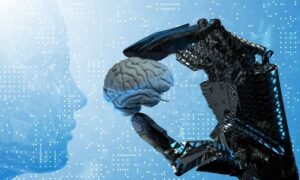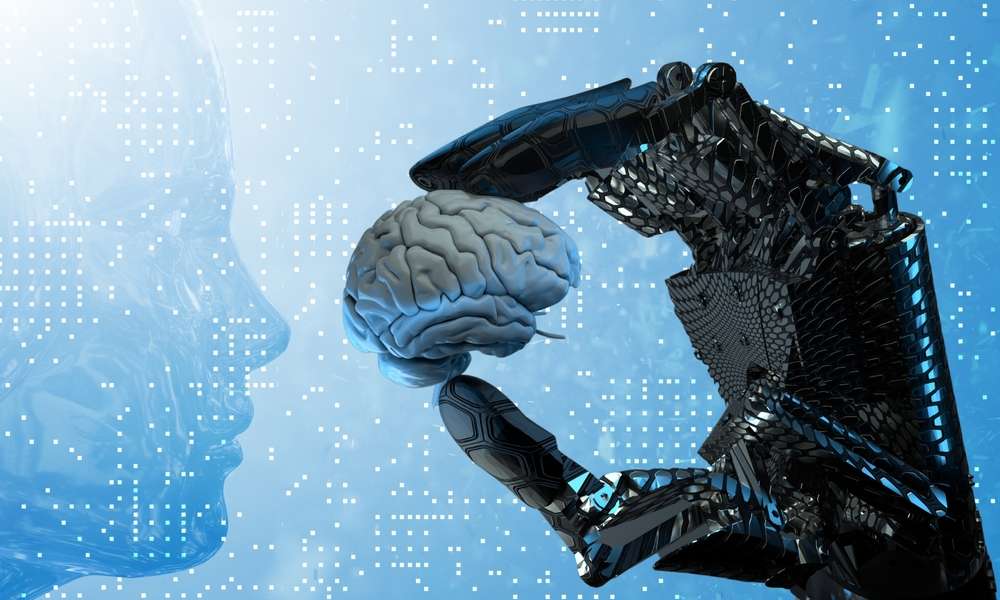Introduction:
In a watershed moment at the crossroads of artificial intelligence (AI) and intellectual property rights, the UK Supreme Court has delivered a resounding verdict against AI inventorship, casting doubt on the notion that machines can autonomously create and hold patents. The case, centering on the AI system named “Dabus,” developed by Dr. Stephen Thaler, marks a pivotal juncture in defining the legal status of AI-generated inventions. The court’s decision, while appearing to quash immediate hopes for AI creativity recognition, initiates a complex discourse on the interplay between machine innovation and intellectual property. The ramifications of this landmark ruling extend beyond the courtroom, sparking discussions on the need for comprehensive legal frameworks that acknowledge and regulate the evolving relationship between AI and inventorship.

The UK Supreme Court’s rationale for denying AI inventor rights reflects the current limitations in existing legal frameworks to accommodate the nuances of machine-generated innovation. However, this verdict is merely a starting point for a broader conversation about the future trajectory of AI in the realm of intellectual property. As technology continues to advance, the decision sets the stage for ongoing debates and potential legal reforms that seek to strike a balance between encouraging innovation and preserving the integrity of traditional intellectual property concepts. The Dabus case, while closing one chapter, opens the door to a new era of legal considerations that will shape the evolving landscape of AI and its role in intellectual property rights.
Dabus: A Spark of Machine Ingenuity?
The focal point of Dr. Thaler’s case was the AI system named Dabus, which he asserted autonomously conceived designs for two innovative inventions—a food container and a flashing light beacon. This marked the inception of a legal saga, where Dr. Thaler contended that Dabus deserved recognition as the true inventor, warranting patent rights that would confer ownership of its creative output to him. The ramifications of such a ruling would have been groundbreaking, setting a precedent that granted AI entities legal personhood and the attendant ownership rights, thrusting legal systems into a realm fraught with ethical and conceptual complexities.
The protracted legal dispute revolving around Dabus symbolizes a pivotal moment in the ongoing evolution of the interface between technology and the law. This complex case has prompted a deep reflection on the fundamental questions that underpin the rights and responsibilities associated with artificial intelligence (AI) systems. At the heart of the matter lies the contemplation of bestowing legal personhood upon an AI entity—a decision that would come hand in hand with the conferment of intellectual property rights. This significant legal battleground demands meticulous consideration of the ethical dimensions, the formulation of robust accountability frameworks, and a careful evaluation of the potential impact on the trajectory of innovation.
As Dr. Thaler advanced his case asserting that Dabus should be acknowledged as the true inventor, the legal system found itself at a crossroads, grappling with the unprecedented challenge of integrating AI entities into established legal frameworks. The prospect of endowing an AI system with legal personhood raises profound ethical questions. It prompts contemplation about the nature of consciousness, creativity, and the implications of recognizing non-human entities as legal entities with rights. The intricate balance between acknowledging the achievements of AI and maintaining a clear understanding of the distinctiveness of human agency becomes a focal point, necessitating a nuanced approach that aligns technological progress with ethical and legal considerations.
Moreover, the case underscores the necessity for robust accountability frameworks to regulate the behavior and output of AI systems. If AI entities were to be granted legal personhood, defining and enforcing ethical standards, establishing liability for actions or errors, and delineating the boundaries of responsibility would become imperative. The potential impact on innovation is another facet of the dilemma. While recognizing AI entities as inventors might foster a sense of collaboration between humans and machines, it introduces complexities regarding ownership, attribution, and fair competition in the intellectual property landscape.
Dr. Thaler’s pursuit of recognition for Dabus serves as a poignant reminder that the trajectory of technological advancement necessitates a parallel evolution of legal principles. The multifaceted challenges unveiled by this legal battle transcend the specifics of the case, urging society and legal systems to engage in a broader discourse on the implications of integrating advanced technologies into established frameworks. As AI capabilities continue to progress, it becomes paramount to navigate these intersections with a judicious blend of legal clarity, ethical considerations, and a forward-looking perspective that balances innovation with the preservation of human values.
The Court Weighs the Scales: Humans vs. Machines
In a consequential ruling, the Supreme Court aligned itself with the UK Intellectual Property Office (IPO) and lower courts, underscoring that only “persons” can be designated as inventors. The crux of their decision rests on the prevailing legal framework, which explicitly characterizes an inventor as a natural human entity endowed with the capacity for independent thought and creativity. While acknowledging the remarkable capabilities demonstrated by Dabus, the judges concluded that, under the existing legal paradigm, machines lack the essential attributes of legal personhood and autonomous agency necessary for recognition as inventors.
This verdict not only resolves the specific case of Dabus but also sets a precedent that reinforces the human-centric nature of inventorship within the legal domain. The decision reflects the judiciary’s cautious approach to adapting established legal definitions to the evolving landscape of artificial intelligence, emphasizing the need for a deliberate and considered exploration of the rights and responsibilities assigned to non-human entities in the realm of intellectual property and invention.
Beyond the Verdict: Unpacking the Implications
While the Dabus case may seem like a definitive setback for AI inventors, it ignites vital conversations about the future of AI and intellectual property rights:
- Redefining the boundaries of creativity: The court’s decision implies that AI, for now, lacks the legal definition of creative agency. This begs the question: as AI progresses and exhibits greater autonomy in generating ideas, will the legal definition of “inventor” need to evolve? Where do we draw the line between sophisticated tools and independent creators?
- Navigating AI authorship and ownership: If humans remain the sole legal inventors, how will we navigate ownership and credit in AI-generated inventions? Collaborative projects between humans and AI will become increasingly common, necessitating clear and fair guidelines for attributing authorship and patent rights.
- Towards a global harmonization? While the UK’s decision aligns with current patent laws in most countries, a global consensus on AI inventorship is absent. As AI development leaps forward, the need for international collaboration and clear legal frameworks becomes more pressing.
Conclusion: A Pause, Not a Full Stop
While the Dabus case may have delivered a setback to Dr. Thaler’s aspirations for AI inventor rights, it serves as a pivotal catalyst for a broader and essential conversation. As the capabilities of artificial intelligence (AI) relentlessly expand, the legal frameworks governing innovation will need to evolve to address the complexities arising in this rapidly transforming landscape. The case not only underscores the need for a nuanced approach to AI inventorship but also acts as a harbinger of the profound implications that lie ahead.
The dialogue initiated by the Dabus case resonates far beyond the courtroom, permeating discussions on fairness, ethical considerations, and the preservation of innovation in the age of AI. As legal systems grapple with defining the rights and responsibilities of AI entities, the ongoing discourse prompts us to envision a future where collaboration between humans and machines as inventors becomes a reality. While the door to AI inventorship may not swing wide open just yet, the Dabus case ensures that it remains ajar, inviting us to glimpse the potential for a future where the creative boundaries are pushed collectively by humans and machines, fostering a new era of inventive collaboration and groundbreaking innovation.

